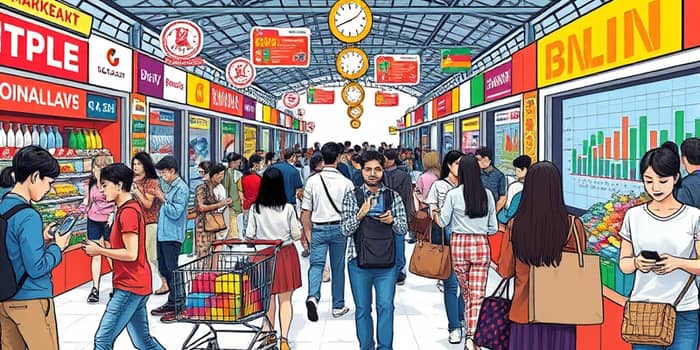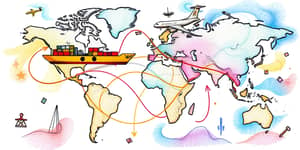
In an era defined by rapid change, retail sales data serve as a window into how societies allocate resources, what they value, and the broader economic pulse. From sprawling urban malls to mobile apps in remote villages, the numbers reveal more than transactions—they tell a story of human priorities and technological progress.
By examining these trends, businesses and consumers alike can make smarter decisions, anticipate shifts, and unlock opportunities that resonate with ever-evolving preferences.
In 2025, global retail sales are estimated to reach a staggering $32.4 trillion, climbing to $32.8 trillion the following year and poised to surpass $35.8 trillion by 2030. The United States, a powerhouse market, recorded $7.26 trillion in retail sales during 2024 and is on track to exceed $8.29 trillion by 2030.
China, meanwhile, achieved a robust 5.1% year-over-year increase in April 2025, with sales hitting RMB 3.72 trillion. These figures underscore the diverse economic engines driving consumer demand across continents, highlighting both mature markets and rapidly expanding regions.
Digital channels have fundamentally altered purchasing behavior. In 2025, global e-commerce sales will top $6.8 trillion, and by 2027 they are forecast to reach $8 trillion. Online transactions will account for roughly 21% of all global retail purchases this year, climbing to 22.6% by 2027.
Nearly one in four dollars spent worldwide—approximately 24%—will flow through e-commerce platforms, with 2.77 billion people shopping online. In the U.S. alone, online retail sales totaled $1.34 trillion in 2024, poised to swell to $2.55 trillion by 2030. Yet, brick-and-mortar stores still command around 80% of worldwide sales, underscoring the enduring appeal of in-person shopping.
Understanding how households allocate their budgets sheds light on societal priorities. In 2023, the average U.S. household spent $77,280, up 5.9% from the previous year. Housing remained the largest expense, followed by transportation and food.
Education saw the most significant increase at 24.0%, followed by a 17.3% rise in miscellaneous spending. Conversely, cash contributions fell by 13.7%, and tobacco spending edged down by 0.3%, reflecting shifting consumer values.
Retailers are no longer guessing what customers want—they’re analyzing every click and footstep. Through heatmaps, movement tracking, surveys, and sales data analytics, brands gain customer journey analysis that reveals product preferences, display effectiveness, and seasonal patterns.
Psychological factors such as price sensitivity, brand loyalty, and the appeal of a seamless integration of in-store and online experiences are shaping purchase decisions in real time. By merging these insights, retailers can craft environments—both physical and digital—that resonate deeply with individual shoppers.
By tailoring offerings to these segments, businesses can deliver more relevant products, personalized promotions, and loyalty programs that truly engage their audience.
Southeast Asia’s digital economy doubled from $100 billion in 2020 to $200 billion in 2023, fueled by widespread internet adoption and smartphone penetration. In Africa, mobile-first retail is bridging gaps in infrastructure, empowering new consumer cohorts.
Major shopping events also leave an indelible mark. Black Friday 2024 drew a record 81.7 million in-store shoppers in the U.S., the highest turnout since the pandemic began. Across Asia, online festivals rival these figures, showcasing the power of targeted promotions and timed sales.
As technology evolves, so do expectations. Consumers demand speed, convenience, and authenticity. Retailers that harness these tools effectively will not only capture market share but also foster lasting loyalty.
The numbers tell a compelling story: one of unprecedented growth, digital transformation, and shifting values. For businesses, the challenge lies in translating raw data into actionable strategies, from optimizing store layouts to crafting personalized online experiences.
By embracing omnichannel integration, leveraging AI insights, and prioritizing sustainability, retailers can meet consumers where they are—whether in a physical store, on a mobile app, or anywhere in between. In doing so, they’ll not only navigate the currents of change but also chart a course toward a vibrant, inclusive, and prosperous retail future.
References













